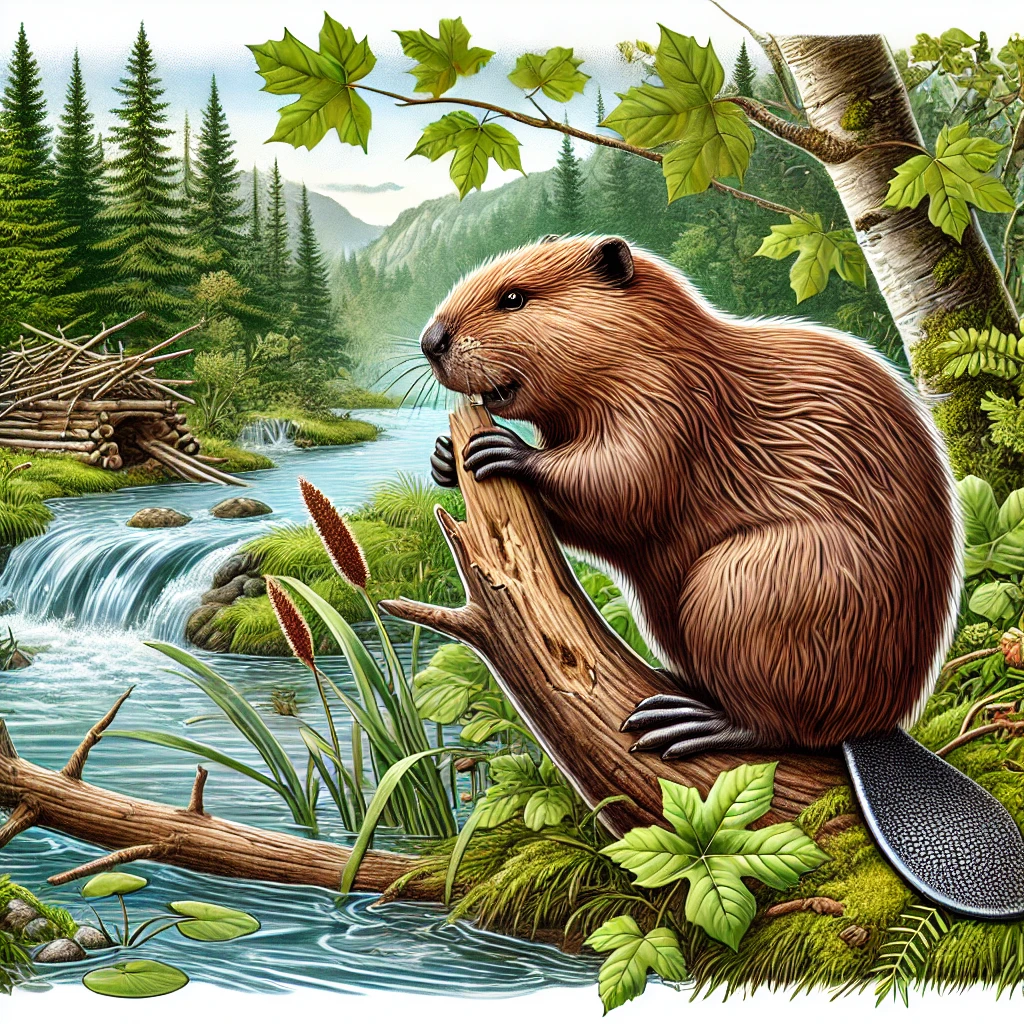What Do Beavers Eat? A Deep Dive Into Their Diet and Feeding Habits
Beavers, the industrious architects of the animal kingdom, are renowned for their dam-building skills and transformative impact on ecosystems. But beyond their role in shaping waterways and wetlands, understanding what beavers eat provides valuable insight into their behavior, habitat preferences, and the important ecological balance they maintain.
In this comprehensive blog, we’ll explore the diet of beavers, how their eating habits change throughout the seasons, and why their feeding behavior is crucial to their survival and the environments they inhabit.
Beavers: Herbivores with a Specialized Diet
Beavers are strict herbivores, meaning their diet consists entirely of plant-based material. Their food preferences revolve around trees, aquatic plants, and various types of vegetation found in their riparian (near water) habitats. While they are best known for felling trees, beavers rely on a range of plant species to meet their nutritional needs.
1. Trees and Woody Plants: The Beaver’s Staple Food
The most iconic image of a beaver is one gnawing on a tree trunk, and for good reason. Woody plants and the bark of trees form a crucial part of the beaver’s diet, especially in the colder months. Beavers prefer softwood trees like:
- Aspen
- Willow
- Birch
- Cottonwood
- Poplar
- Alder
The inner bark, or cambium layer, is the most nutritious part of the tree for beavers, as it contains the highest concentration of sugars and other nutrients. Beavers use their sharp, ever-growing incisors to strip the bark from branches and trunks, and they often store these branches in food caches beneath the water for consumption during winter when vegetation is scarce.
In addition to bark, beavers consume the twigs, leaves, and even the wood itself, though the cambium layer is the most sought after.
2. Aquatic Plants and Vegetation: A Seasonal Shift
During the warmer months of spring and summer, beavers shift their diet to aquatic plants, which provide a rich source of nutrients. This seasonal adaptation allows them to diversify their diet and make use of the abundant food sources around them. Some common aquatic plants that beavers eat include:
- Water lilies
- Cattails
- Pondweed
- Duckweed
- Algae
Beavers are especially fond of the roots and tubers of these plants, which are rich in carbohydrates. Aquatic plants also contain a high water content, which helps keep the beavers hydrated while they feed.
3. Shrubs, Herbs, and Grasses
In addition to trees and aquatic plants, beavers will consume a variety of shrubs, herbs, and grasses that grow along the water’s edge. These plants are more common in the summer, when green vegetation is plentiful. Beavers will eat:
- Clovers
- Ferns
- Sedges
- Grasses
- Herbaceous plants
These green plants are easier to digest and offer a quick source of energy, though they are typically less fibrous and long-lasting compared to woody plants.
4. Nutritional Needs and Adaptations
Beavers have a unique digestive system adapted to their fiber-rich diet. Like other herbivores, they rely on bacteria in their gut to help break down the tough cellulose found in plant cell walls. Their large cecum, part of their digestive tract, is where most of this fermentation and digestion takes place, allowing them to extract energy from woody materials.
Interestingly, beavers also engage in coprophagy—the re-ingestion of their feces. This behavior allows them to extract even more nutrients from the plant material they consume, especially during the winter months when their diet is lower in diversity.
5. Winter Feeding: Food Storage and Survival
Winter presents a unique challenge for beavers, as the vegetation they typically eat becomes scarce, and snow and ice cover their environment. To prepare for the harsh winter, beavers build food caches during the fall by storing branches and logs in the water near their lodges. These underwater larders are essential for their survival because they allow beavers to access food even when the surface of the water is frozen.
The beavers will dive into the water from their lodge, retrieve stored branches, and feed on the bark while underwater or inside their cozy, insulated homes. This preparation ensures that they have enough food to last through the winter until spring arrives and fresh vegetation is available again.
6. Beavers’ Ecological Impact Through Feeding
Beavers play a crucial role in their ecosystems through their feeding behavior. By cutting down trees and creating dams, they modify the landscape to suit their needs, but this also benefits other species. Their dams create wetlands, which support a wide variety of wildlife, including fish, amphibians, and birds.
Additionally, the act of cutting trees promotes regrowth in forest areas, allowing for the establishment of new vegetation. Over time, this regeneration creates a diverse mix of plant species, which can benefit the entire ecosystem.
7. The Relationship Between Beavers and Trees
While beavers may appear to damage forests by cutting down trees, they are an integral part of the natural cycle. Many tree species that beavers prefer, like aspen and willow, are resprouters—meaning they can regenerate from their root systems after being cut down. This creates a continuous cycle of growth and renewal that helps maintain a healthy and balanced ecosystem.
Moreover, by thinning forests and creating open spaces, beavers encourage biodiversity, allowing sunlight to reach the forest floor and fostering the growth of new plant species. In this way, beavers act as ecosystem engineers, shaping their environment for the benefit of many species.
Conclusion: Beavers as Nature’s Architects and Herbivores
Beavers have evolved to thrive on a diet of woody plants, aquatic vegetation, and a variety of shrubs and grasses. Their specialized teeth, digestive system, and unique behaviors enable them to efficiently extract nutrients from fibrous plant materials, even in challenging environments. Through their feeding habits, beavers not only sustain themselves but also shape their habitats in ways that benefit countless other species.
Whether building dams or storing food for winter, beavers are remarkable creatures that play a key role in maintaining healthy ecosystems. Understanding their diet helps us appreciate the intricate balance they create in nature, as they continue to thrive as herbivores in diverse habitats across North America.






